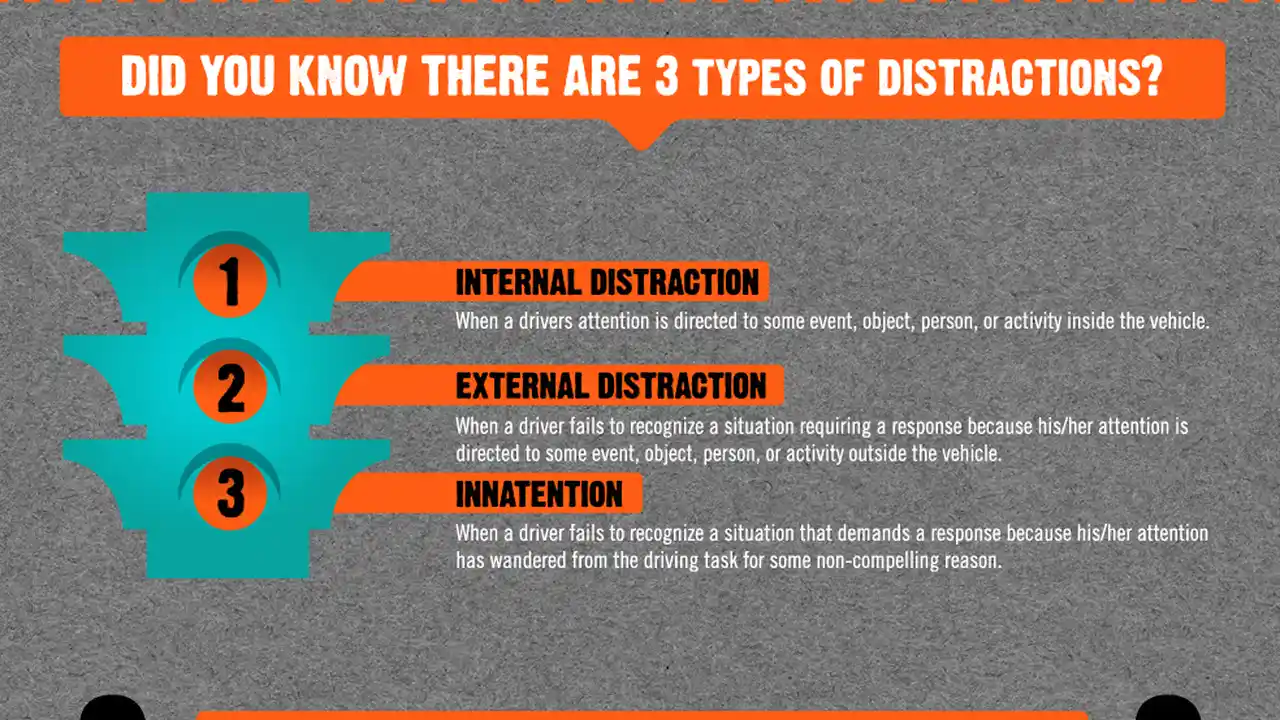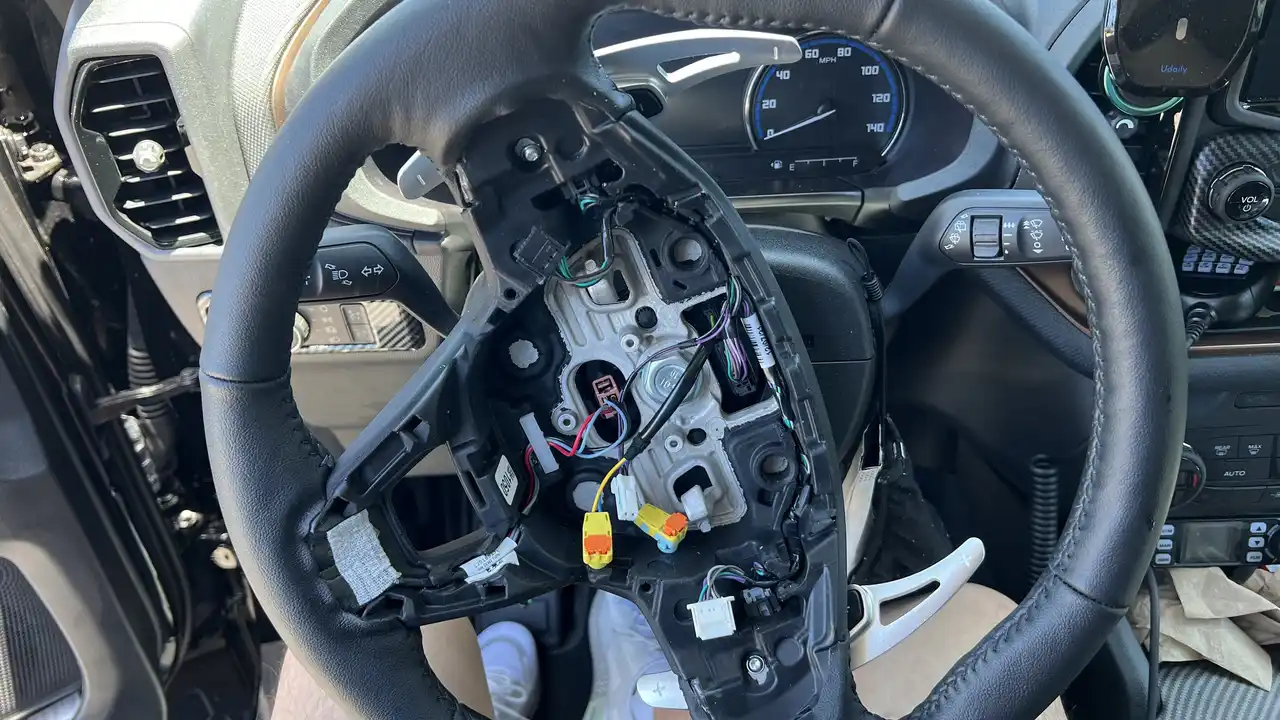How Technology Can Reduce Distracted Driving Accidents
Sample meta description.

Distracted Driving Accidents The Problem and the Opportunity for Tech
Okay, let's face it. We've all been there. Glance at a text, change a song, maybe even sneak a bite of that burger while cruising down the highway. Distracted driving is a massive problem, and it's not just a minor inconvenience. It's a serious safety hazard leading to countless accidents every year. But here's the good news: technology is stepping up to the plate, offering solutions that can significantly reduce these accidents. We're talking about systems that can literally save lives.
Understanding the Root Causes of Distraction Behind the Wheel
Before diving into the tech, let's quickly break down what exactly constitutes distracted driving. It's not just texting, though that's a major culprit. It encompasses anything that takes your attention away from the primary task of driving. Think about it: eating, grooming, adjusting the radio, talking to passengers, even daydreaming can all be forms of distraction. The key is that your eyes are off the road, your mind isn't fully engaged, or your hands aren't on the wheel. All bad news when operating a multi-ton vehicle at speed.
In-Vehicle Technology Solutions Anti-Distraction Systems
This is where things get interesting. Automakers and tech companies are developing a range of in-vehicle systems designed to combat distracted driving. Let's explore some of the most promising:
- Driver Monitoring Systems (DMS): These use cameras and sensors to track the driver's head and eye movements. If the system detects drowsiness, inattention, or even a phone in hand, it can issue warnings, vibrate the seat, or even gently nudge the vehicle back into its lane.
- Advanced Driver-Assistance Systems (ADAS): ADAS includes features like lane departure warning, automatic emergency braking, and adaptive cruise control. While not specifically designed for distraction, they provide a safety net by intervening when the driver is not paying attention.
- Voice Assistants and Integration: Think Apple CarPlay and Android Auto. These systems allow drivers to access navigation, music, and communication features using voice commands, minimizing the need to take their eyes off the road. They also integrate with apps that can read texts aloud and allow for voice-to-text replies.
- Augmented Reality (AR) Head-Up Displays: These project information onto the windshield, directly in the driver's line of sight. This minimizes the need to look down at the instrument panel or navigation screen.
Specific Product Recommendations for Distraction Reduction
Alright, let's get down to brass tacks. Here are a few specific products and technologies that you might want to consider:
- SmartDrive Systems: This is a comprehensive system primarily aimed at commercial fleets, but its underlying principles are applicable to individual drivers as well. SmartDrive uses cameras, sensors, and AI to monitor driving behavior and provide real-time feedback. It can detect things like speeding, hard braking, and, of course, distracted driving. While a full SmartDrive system is expensive (think thousands of dollars per vehicle), the data and insights it provides can be invaluable for improving driving safety.
- Nauto: Similar to SmartDrive, Nauto uses AI-powered cameras to monitor driver behavior and road conditions. It can detect and alert drivers to potential hazards, as well as identify and address distracted driving. Nauto's system is also geared towards commercial fleets, with pricing dependent on fleet size and features. Expect to pay hundreds of dollars per month per vehicle.
- Anker Roav Viva: On the more affordable end of the spectrum, the Anker Roav Viva is a smart car charger that integrates with Amazon Alexa. While it doesn't directly monitor driving behavior, it allows you to control music, navigation, and other apps using voice commands, minimizing the need to fumble with your phone. It typically retails for around $50.
- Hudway Drive: This is an aftermarket head-up display that projects information onto a small screen mounted on your dashboard. It can display speed, navigation directions, and other critical information, helping you keep your eyes on the road. Prices range from $200-$500 depending on the model.
- Drivemode App: This is a free app for Android phones that simplifies the phone's interface while driving. It provides large, easy-to-tap buttons for accessing common functions like navigation and music. While it doesn't prevent distraction entirely, it can make it easier and safer to use your phone while driving.
Comparing Distraction Reduction Products Features and Cost
Let's break down the pros and cons of each of these products:
| Product | Features | Pros | Cons | Price |
|---|---|---|---|---|
| SmartDrive Systems | Comprehensive driver monitoring, real-time feedback, data analytics | Highly effective for improving driving safety, detailed data | Expensive, primarily for commercial fleets | Thousands of dollars per vehicle |
| Nauto | AI-powered cameras, hazard detection, distracted driving alerts | Advanced AI capabilities, focuses on both driver and road conditions | Expensive, primarily for commercial fleets | Hundreds of dollars per month per vehicle |
| Anker Roav Viva | Alexa integration, voice control of music and navigation | Affordable, easy to use, improves voice control | Doesn't directly monitor driving behavior | $50 |
| Hudway Drive | Head-up display, projects information onto the dashboard | Keeps eyes on the road, customizable display | Can be distracting if not properly configured, price varies | $200-$500 |
| Drivemode App | Simplified phone interface, large buttons for easy access | Free, easy to use, simplifies phone interface | Doesn't prevent distraction entirely, only for Android | Free |
Real-World Scenarios Using Anti-Distraction Technology
Let's paint a picture of how these technologies can be used in real-world scenarios:
- The Commuter: Imagine you're stuck in rush hour traffic, tired after a long day at work. Your phone buzzes with a text message. With a DMS, the system might detect your eyes drifting downward and issue a warning, reminding you to stay focused. An AR head-up display shows you upcoming turns, reducing the need to glance at your phone's navigation app.
- The Long-Haul Trucker: A trucker driving through the night, battling fatigue, can benefit greatly from SmartDrive or Nauto. The systems can detect drowsiness and provide alerts, preventing potentially fatal accidents. The data collected can also be used to identify and address risky driving habits.
- The Family Road Trip: On a long road trip with kids, the Anker Roav Viva can be a lifesaver. You can use voice commands to play music, get directions, and even make calls, without taking your hands off the wheel or your eyes off the road. ADAS features like lane departure warning and automatic emergency braking provide an extra layer of safety.
The Future of Distraction Reduction Technology
The fight against distracted driving is far from over, but the future looks promising. We can expect to see even more sophisticated DMS systems that can detect a wider range of distractions, including emotional distress and cognitive overload. AI will play an increasingly important role in predicting and preventing accidents. And as self-driving technology matures, it may eventually eliminate the problem of distracted driving altogether (though that's still a ways off). For now, embracing the available technology and practicing responsible driving habits is the best way to stay safe on the road.
:max_bytes(150000):strip_icc()/277019-baked-pork-chops-with-cream-of-mushroom-soup-DDMFS-beauty-4x3-BG-7505-5762b731cf30447d9cbbbbbf387beafa.jpg)





